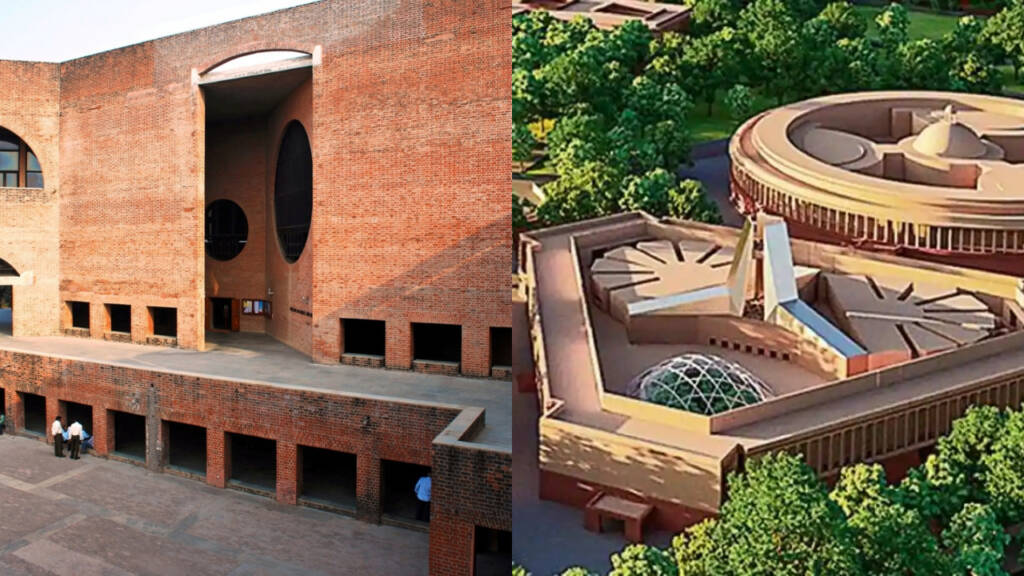If the ambitious Central Vista project of the Modi government wasn’t already enough for a section of Indians (liberal by ideology) to frown endlessly and rant against the present establishment’s grand plans to give the capital of the world’s largest democracy a new look, IIM Ahmedabad is now all set to bring down some structures from its old campus to make way for the new ones, which are in sync with the times we live in. Expectedly, the decision of IIM-A has irked many, particularly the alumni of the institute, who aren’t able to get over their nostalgia.
The Indian Institute of Management, Ahmedabad, plans to bring down 18 student dormitories built by legendary American architect Louis Kahn on the old campus, and replace them with new buildings. The new buildings are also expected to accommodate more students — in place of the existing dorms, which can accommodate 500 students, the plan is to build 800 student rooms in a new hostel complex. The fact that Louis Kahn designed the structure of the existing buildings is the main excuse for many to vocally criticise the institute’s decision of making its campus infrastructurally safer and liveable.
No doubt, the structures of IIM-A, whose construction was overseen by Louis Kahn are iconic and architecturally marvellous, but the simple fact that they are unsafe, dilapidated and in all likelihood, not earthquake-resistant should ideally be reason enough for all concerned individuals to not speak against the planned reconstructions. And why wouldn’t they be dilapidated? As a matter of fact, the said buildings of IIM-A were constructed way back in the 1960s. And much like the colonial buildings of Lutyens Delhi, they too need a complete renovation.
Yet, there are certain memories and feelings of nostalgia associated with the said buildings for some people, particularly the alumni of IIM-A, which is serving as a deterrent to making the campus safer and modern. Many Indians strangely find poetic beauty in old, dilapidated and generally unliveable structures. If there is no human activity within such structures, by all means, they can and must be preserved. However, the glorification of structures which have with time naturally worn-out must be stopped.
Justifying the decision to bring down the dorms, IIM-A Director Prof Errol D’Souza wrote an 11-page letter on Wednesday to the institute’s alumni, citing multiple problems in the existing structure that made it “unliveable”, among them “concrete and slabs falling from the roofs with damaging consequences for the lives of the residents”. Using strong words, D’Souza also wondered if it was “appropriate… to colonise future perceptions of living spaces.”
Shift focus to New Delhi, and the same kind of opposition is being seen against the Central Vista project. Those who have been inside India’s parliament know that it does not represent a new and infrastructurally advancing India. Similarly, the scattered government offices, ministries and departments across North and South blocks make it a hassle for bureaucratic requirements to be fulfilled seamlessly. The existing buildings between Rashtrapati Bhavan and India Gate, furthermore, reek of a colonial construct, which should have no place in the new India we live in.
Read more: Get over the nostalgia of British era edifices, Delhi is going to change right before your eyes
By mindlessly opposing new infrastructure projects which seek to replace existing ones – like in the case of IIM-A, a section of Indians are doing a disservice to the country, not to mention the fact that they are acting as an impediment to India’s development trajectory. Such influencers must first be ignored, and if need be, restrained on the grounds of purposely halting development work due to an inherent sense of attraction they seem to harbour for dystopia, poverty and colonialism.
